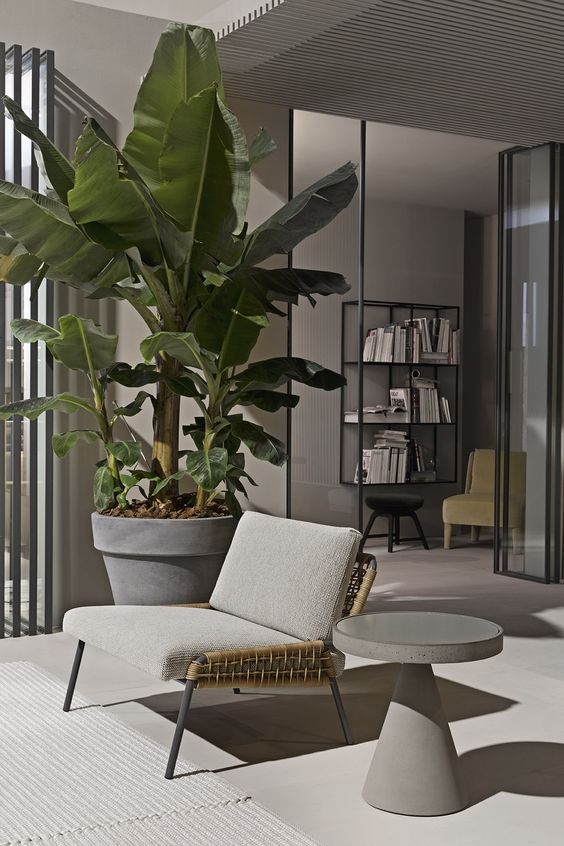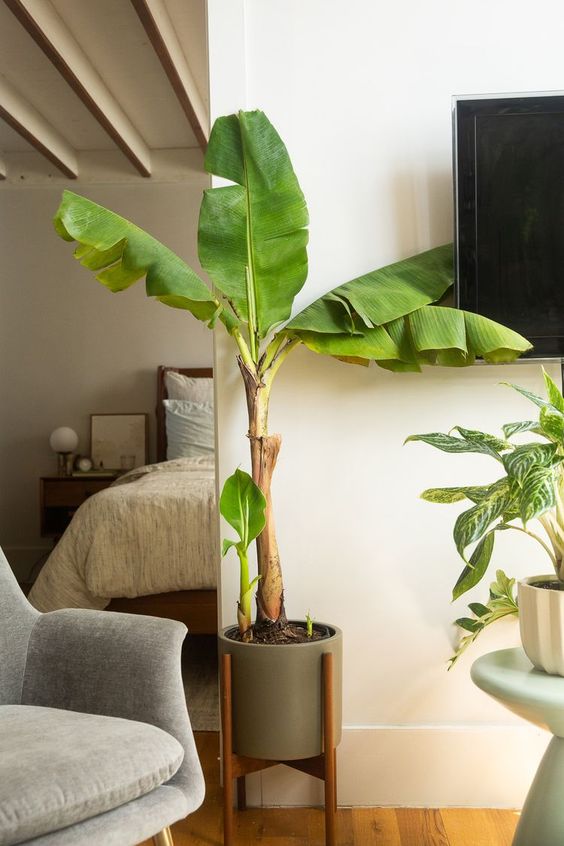Banana trees have emerged as an unconventional yet charming trend in interior and exterior décor, gracing both the insides and outsides of buildings. These lush and vibrant trees, with their broad leaves and tropical aura, have become a symbol of exotic beauty and a unique style statement.

Indoors, banana trees add a touch of the tropics to living spaces. Their broad, fan-like leaves create a dramatic visual impact, infusing rooms with a sense of lush greenery and a relaxed, resort-like ambiance. Placed strategically in corners or as centerpieces, these trees bring a sense of nature’s tranquility into homes, offices, and commercial spaces.

Beyond interior decoration, banana trees have found their place in outdoor landscaping. Often used in urban landscapes and building exteriors, these trees offer a refreshing contrast against the concrete jungle. Their towering height and broad leaves create a striking visual spectacle, breaking the monotony of cityscapes and infusing them with a natural, organic touch.

Moreover, the adaptability of banana trees to various climates and their relatively low maintenance requirements make them an ideal choice for both interior and exterior decoration. They thrive in a range of conditions, adding a touch of greenery even in environments that might not support other types of plants.

The symbolism associated with banana trees further enhances their appeal in décor. In many cultures, banana trees are seen as a symbol of prosperity, growth, and abundance. Thus, incorporating these trees into the design of buildings signifies a wish for prosperity and a connection to nature’s bountiful beauty.

Overall, the use of banana trees in decorating both interior and exterior spaces has transcended traditional norms, offering a unique, refreshing, and aesthetically pleasing way to bring nature into our built environments. Their adaptability, symbolism, and striking appearance make them a beloved choice for those seeking to create distinctive and inviting spaces.






